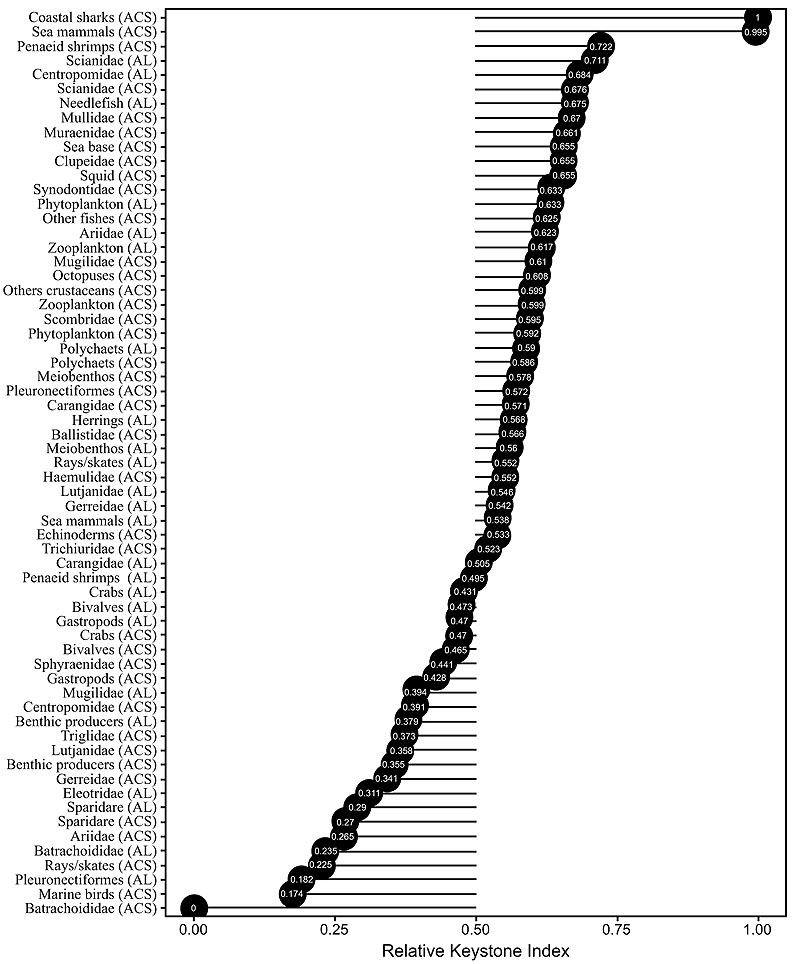Fig. (5)
Keystoneness for the functional groups of the Alvarado lagoon and adjacent continental shelf model. For each functional group, the keystone index is reported against overall effect. Overall effects are relative to the maximum effect measured in the trophic web. The species are ordered by decreasing keystoneness. 1. Sea mammals, 2. Sea mammals, 3. Sea birds, 4. Sharks, 5. Rays/skates, 6. Rays/skates, 7. Mackerels, 8. Goatfish, 9. Flatfish, 10. Flatfish, 11. Croakers/drums, 12. Croakers, 13. Herrings, 14. Herrings, 15. Lizardfish, 16. Gruopers, 17. Jacks/pompanos, 18. Jacks, 19. Filefish, 20. Cutlassfishes, 21. Barrucadas, 22. Needlefish, 23. Searobins, 24. Snappers, 25. Snappers, 26. Mojarras, 27. Mojarras, 28. Pinfish/porgies, 29. Pinfish/porgies, 30. Sea catfish, 31. Sea catfish, 32. Snooks, 33. Snooks, 34. Mullets, 35. Mullets, 36. Grunts, 37. Morays, 38. Toadfish, 39. Toadfish, 40. Sleepers, 41. Other fishes, 42. Squids, 43. Octopuses, 44. Crabs, 45. Crabs, 46. Penaeid shrimps, 47. Penaeid shrimps, 48. Others crustaceans, 49. Echinoderms, 50. Gastropods, 51. Gastropods, 52. Polychaetes, 53. Polychaetes, 54. Bivalves, 55. Bivalves, 56. Meiobenthos, 57. Meiobenthos, 58. Zooplankton, 59. Zooplankton, 60. Phytoplankton, 61. Phytoplankton, 62. Sea grass, 63. Benthic producers, 64. Shrimp by-catch, 65. Detritus, 66. Detritus, 67. Bottom shrimp trawling, 68. Gillnets, 69. Atarrayas.


